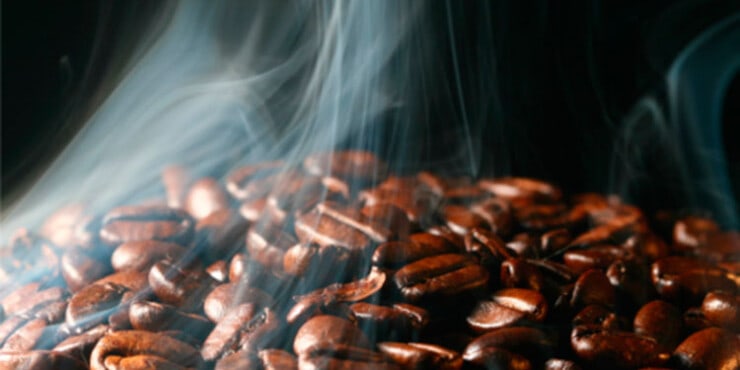The degassing of the coffee is the roasting process immediately. In which the release of gases that influence the quality of the coffee occurs.
The number of gases generated in the coffee bean, such as carbon dioxide, are decisive in the equation that produces fresh coffee or stale coffee.
Therefore, when grinding, it is very important to know the degassing time of the coffee to achieve a product that offers successful extractions.
If you want to know more about the coffee process from roasting to extraction, keep reading this article.
Here I explain what it is, its importance, and how to do the degassing of coffee well.
What is coffee degassing?
When the coffee bean is subjected to the heat treatment known as roasting, it undergoes a physical and chemical transformation that forms gases within the bean. Consequently, once toasted, they release gases over time. Especially CO 2 (carbon dioxide). Gases that, in turn, are responsible for transmitting the perception of freshness and aromas of coffee.
As long as the whole roasted grain is preserved, fewer gases are released, therefore, it preserves its fragrance better. When ground, the release of the gas is immediate. As well as the oxidation process. On the other hand, the fresher or just roasted the coffee, the more gases it concentrates. Being thus quite difficult to prepare a cup of quality coffee. That is why after being roasted and before being ground, the coffee must rest in a degassing stage.
What problems does the concentration of gases cause in coffee?
If the coffee is freshly roasted, less than a week old, it has a higher concentration of gases.
When the extraction is carried out, the gases escape from bubbles and prevent the infusion of the sediment with the water. Obtaining, as a result, an extraction dissatisfied in taste and aroma.
On the contrary, if the coffee has been roasted for more than three months, it has already lost a large part of the gases that guarantee its essence and aroma.
And if it is ground, the degradation is accelerated more.
The result of the extraction will be a preparation very poor in nuances, flavors and with a tendency to rancid or sour taste.
Why is there carbon dioxide in coffee?
There is carbon dioxide in coffee thanks to pyrolysis.
A physical and chemical decomposition event that occurs at the end of roasting. When the coffee beans are subjected to high temperatures (220 ° C) between the first and second crack.
Coffee beans darken, turn brown, lose size due to dehydration.
Sugars melt, decompose, release energy, gases, and, in greater quantity, CO 2.
Carbon dioxide or CO 2 plays an important role in the condition of coffee. Its concentration affects (*) the following characteristics in coffee:
- Freshness
- Useful life
- Grinding point
- Extraction quality
- Formation of the coffee cream
- Sensory profile
- Packing
(*) According to 2018 report in the Journal of Agricultural and food chemistry.
The release rate of carbon dioxide depends on the mass of the coffee particle. The lower the mass of the coffee particle, the higher the release rate.
Other factors that affect the speed of degassing depend on the variety of the coffee tree, the size of the beans, the humidity, the packaging.
For example:
- Robusta coffee has a higher concentration of gases than Arabica coffee.
- Dark roast retains more gas than light roast.
- The higher the humidity, the slower the degassing
What is the ideal degassing time for coffee?
So, carbon dioxide should not be lacking in coffee, nor should it exceed in concentration. Well, its adequate quantity avoids the tastelessness of stale coffee. The average degassing time is estimated to be between three days and three weeks after roasting.
It depends on the factors mentioned that affect the rate of gas release. In any case, those who simply consume packaged coffee should look on the package for the expiration date and roast of the coffee. In order to verify that it is not expired.
Today, coffee packers have incorporated technology that allows them to maintain a balanced seal. Using materials and escape valves to the packaging. To which they apply a vacuum and inject nitrogen to preserve the aromas of the coffee and reduce oxidation or aging due to grinding. For those who dare to roast coffee on their own, write down the following:
Recommendations when roasting coffee at home
- Keep track of the type of bean and the date your coffee was roasted.
- Open the green or raw coffee packaging just before roasting. Don’t leave it open. Close it tightly.
- Do extraction tests from the third day of roasting and before the eighth day.
- Store freshly roasted coffee in semi-airtight containers (remember that CO 2 must be released), away from sunlight and moisture.
- Roast coffee in batches. Not all the packaging at once.
- Finally, when roasting and degassing the coffee it is important to consider: the type of bean and the roasting date, the way to store the coffee, and the preparation that you will carry out.

